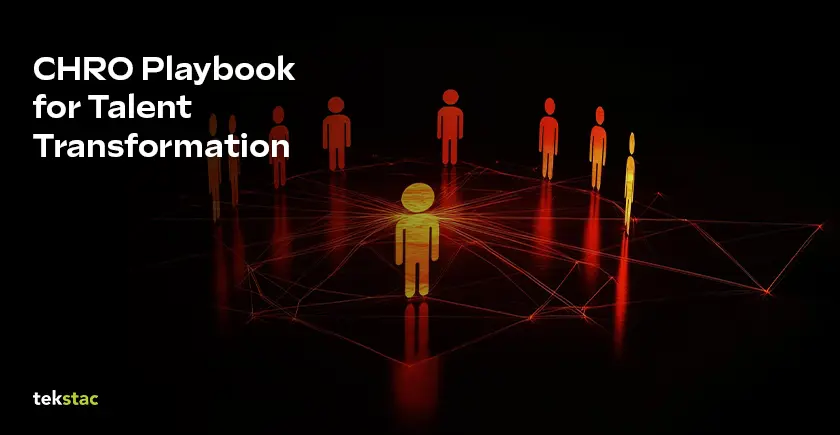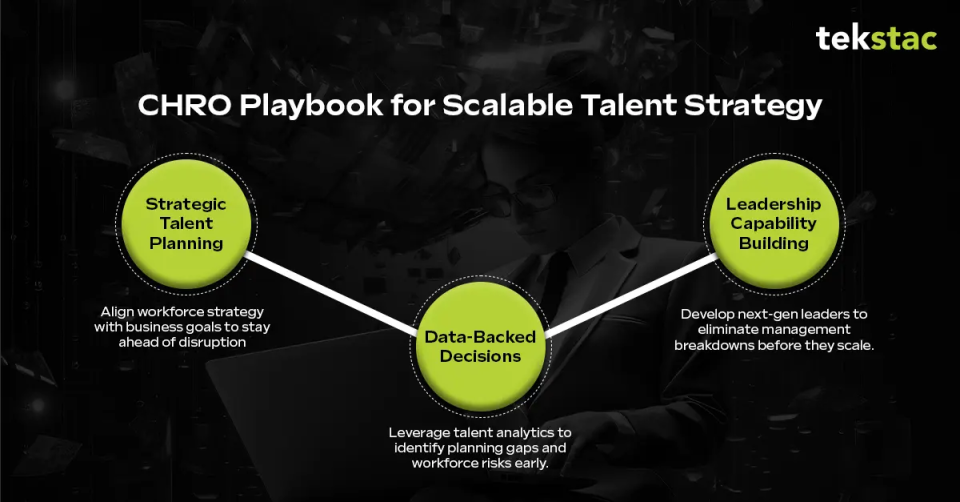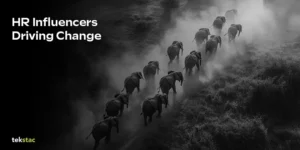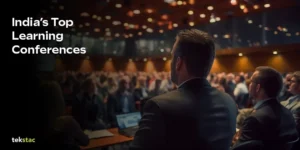Talent Strategies for CHROs in 2025: Trends, Tactics, and Transformation
July 22, 2025

As we move through 2025, talent strategies have evolved from a nice-to-have to a business necessity for survival.
CHROs (Chief Human Resources Officers) aren’t just managing people anymore. They’re using data, much like architects, to reshape entire organizations from the inside out.
Here’s the reality: your competition already knows what you’re thinking. They can predict your next hire, spot your talent gaps, and attract your best performers before you even realize they’re unhappy.
Companies that master data-driven talent decisions are outperforming those still relying on gut feelings and annual reviews. Your people aren’t just employees. They’re your competitive edge. When human potential meets strategic precision, competitors can’t keep up.
The question isn’t whether you need to evolve your approach; it’s whether you can. It’s whether you dare to reimagine how you think about people completely.
Talent Trends Shaping the Future
1. AI-Powered Talent Strategies Transform the Leadership Landscape
Your most significant competitor just hired three of your key people. They knew those employees were unhappy six months before you did.
How?
AI told them.
AI tools are exposing everything. Statista reports that 72% of organizations worldwide have adopted AI in at least one business function. Skills inventories, performance patterns, flight risks – it’s all transparent now.
Modern approaches aren’t about posting jobs and hoping anymore. They’re about intelligence, and you’re fighting blind.
2. Workforce Planning for CHROs Demands Strategic Foresight
While you’re sitting in meetings talking about “hiring challenges,” your competitors are building talent machines that make your approach look amateur.
Modern workforce planning isn’t about spreadsheets anymore – it’s about survival. Here’s what’s happening while you sleep: McKinsey found that AI can automate up to 70% of what your people do every day. That accountant you just hired? Half of their job is already replaceable. That marketing coordinator? AI is writing better copy than they are.
Actionable Talent Strategies for CHROs

1. Strategic Talent Strategies Drive Competitive Advantage
Three moves that separate winners from losers:
- Future planning beats reactive hiring: Top companies plan their workforce like chess masters—three moves ahead, always. While you’re scrambling to replace those who quit yesterday, they’re building the skills they’ll need in 2027. They know which roles AI will eliminate and which new ones they’ll create. Strategic planning prevents crisis hiring that costs 40% more than proactive recruitment.
- Career clarity drives retention: IBM’s AI helps employees visualize their exact career path and the training needed to achieve it. People don’t leave when they see their future. Clear progression plans are more effective than any retention bonus you can offer. Internal mobility costs 50% less than external hiring and builds loyalty that competitors can’t break.
- Digital behavior reveals the truth: Forget annual surveys and exit interviews. AI analyzes the digital patterns of your workforce, including email tone, project participation, and collaboration frequency. It whispers who’s mentally checked out before they even think about updating their LinkedIn profile. This intelligence prevents departures rather than just tracking them.
2. Data-Driven Talent Strategies Expose Planning Weaknesses
Five brutal truths about workforce planning you need to face:
- Your scenarios are weak: You plan as if tomorrow will be exactly like today. Smart CHROs prepare for scenarios where AI eliminates entire job categories, where remote work erodes office culture, and where top employees are poached overnight.
- Skills matter more than degrees: You’re still hiring based on where someone went to school instead of what they can do. Skills-based companies are stealing your best candidates because they see potential you’re blind to. While you demand bachelor’s degrees, they’re hiring brilliant problem-solvers who learned through experience, boot camps, or self-teaching.
- Your gut is expensive: Every “feeling” you have about people costs money. Data reveals who is mentally checked out before they quit. It shows you what skills you’ll need next year. But you’d rather trust your instincts than numbers. Predictive analytics can forecast turnover with 85% accuracy, but most CHROs tend to overlook these warnings.
- Diversity isn’t charity: It’s a competitive advantage. Diverse teams spot market changes faster and make smarter decisions. You think you’re being socially responsible while your competitors are using diversity as business intelligence. Diverse companies are 35% more likely to outperform competitors financially.
- You’re bleeding talent internally: Your people leave because they can’t see their future at your company. Internal mobility isn’t just HR fluff – it’s a talent retention strategy that works. Every external hire costs more than developing someone internally. Companies with strong internal mobility have 41% lower turnover rates.
3. Modern Talent Strategies Eliminate Management Failures
How your current approach is failing:
- Your feedback is too slow: Annual reviews tell people how they did last year, not how to improve today. By the time you give feedback, problems have already hurt performance.
- Recognition misses the mark: Generic praise doesn’t motivate anyone. Some people want public recognition at team meetings, while others prefer private feedback from their manager. Some value career advancement, while others seek opportunities for skill development. Your one-size-fits-all recognition feels empty and meaningless. Personalized recognition increases engagement by 31%.
- Technology replaces thinking: You’ve invested in expensive HR platforms that generate visually appealing dashboards, showcasing engagement scores, performance metrics, and development gaps. But your managers stare at the data without knowing what actions to take. The software alerts you that someone is disengaged but doesn’t indicate whether they require more challenging work, better recognition, or career clarity.
- Everyone gets treated the same: You use identical development plans, identical recognition programs, and identical career conversations for different people. But Sarah thrives with autonomy, while Mike needs structure. David wants to advance quickly, while Lisa wants to master her current role.
4. Effective Talent Strategies Transform Leadership Development
Your leadership programs are failing – here’s why:
- You teach theory instead of reality: People sit in classrooms learning about emotional intelligence, but they never practice having difficult conversations, managing underperformers, or leading through crises that occur at work. Experiential learning delivers 90% better retention than classroom training.
- Digital learning lacks depth: You’ve moved everything online to save costs, but in doing so, you’ve lost the human connection that builds fundamental leadership skills. People click through modules about communication without ever actually practicing face-to-face difficult conversations or learning to read body language and understand team dynamics. Virtual training without human interaction fails 67% of the time.
- Succession planning picks favorites: You identify “high-potential” employees based on who speaks up in meetings and fits the traditional leadership mold. You miss quiet leaders, diverse perspectives, and people who lead differently. Your succession pipeline resembles your current leadership – the same backgrounds, the same thinking, and the same limitations. Inclusive succession planning identifies 40% more future leaders.
- Development happens in isolation: You send individuals to programs but don’t change the systems they return to. They learn new approaches but work in environments that reward old behaviors. Without organizational support, new skills often disappear within weeks of completing training. Sustainable change requires system-wide transformation, not individual training.
Organizational Transformation at Scale
1. Dynamic Talent Management Revolutionizes Employee Experience
Your current approach is stuck in the past, and your top talent is aware of it. While you’re conducting annual reviews and basic recognition programs, innovative companies are engaging in real-time coaching conversations and creating personalized growth experiences for each employee.
Research shows employees with positive experiences are 16 times more engaged. That’s the difference between people who stay and grow versus people who quietly quit and leave.
2. Leadership Development Programs Drive Organizational Resilience
Your current programs are expensive team-building retreats disguised as strategy. While you send people to weekend workshops about “authentic leadership,” your competitors are building leaders who know how to navigate chaos, inspire teams, and drive results when everything falls apart.
You think leadership development means soft skills training and motivational speakers. Real development creates people who can make tough decisions under pressure and turn uncertainty into opportunity.
Ready to transform your talent strategy for 2025?
Discover how cutting-edge platforms can accelerate your workforce development initiatives and drive measurable business impact.
Explore innovative solutions that align with your strategic objectives at Tekstac.





